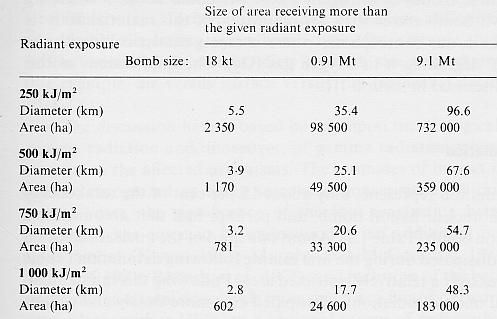Electromagnetic Pulse (EMP) - July 1962: a missile launched fro the Johnston Atoll, about 1,300 kilometers south west off the Hawaii Islands, brings a 1.4 MT nuclear weapon at an altitude of 400 kilometers where it is detonated. A white-greenish flash lights itself oh the Hawaiian skies painting them of violet, red and yellow. Almost contemporaneously the fuses of 300 street lamps blow up, the alarms start to ring and the electrical lines remain without electricity. The day after the newspapers will report "an unexplainable nuclear blast wave". It is afterward established that the explosion's effect is an electromagnetic pulse (EMP), i.e., an intense electromagnetic wave similar to radio waves and covering the wavelength band included within 0 ad 100 megahertz and it is generated when the gamma radiations are absorbed by the air or the ground. The EMP, which is about one millionth of the total energy released during a nuclear explosion, differs in two important ways from radio waves: first of all it generates strong fields of electromagnetic radiation: while the signals generated by radio waves may induce 1 millivolt or less in a receiving antenna, the EMP may induce thousands of volts and, besides, it is a single pulse of energy which exhausts itself in a fraction of a second. In this respect it is similar to atmospheric lightning but the voltage increase is, on the average, one hundred times faster so that the majority of the equipment employed for the protection of electrical and electronic equipment from atmospheric discharges happen to be too slow for protection from the EMP which can cross such circuits in 10 to 20 nanoseconds (billionths of a second). A weapon detonated on the ground will generate a voltage of several tens of thousands of volts per meter of electrical wire within short distances, within the area where the shock wave's overpressure reaches 10 psi. Atmospheric explosions produce a less intense EMP but high-altitude explosions, above 30,000 meters, produce vast fields of EMP within hundreds or thousands of kilometers from the explosion's center. There are no indications that EMP may be dangerous to biological organisms, except for the possibility that an individual may be contacting a metallic conductor at the moment of the EMP release and thus suffer a dangerous electrical shock.
Pulse of radiant exposure from a nuclear bomb exploded in the troposphere. |
Transient Radiation Effects on Electronics (TREE) - TREE refers to low intensity electromagnetic fields caused by nuclear explosions which may temporarily affect electronic equipment exposed to the radiation. The term "transient" is used since the radiation, following a nuclear explosion, usually will last less than one minute. NUCLEAR WEAPONS A nuclear bomb may be of type "A", i.e., atomic, where the explosion is obtained by a fission reaction, or "H", i.e., hydrogen, where the explosion if obtained either by fusion or both fission and fusion reactions. In theory there is no limit to the power which may be obtained from a nuclear weapon. Low yield tactical bombs, in the range between 1 and 100 kiloton i.e., the so called "neutron bombs" usually are of the "H" type. |
